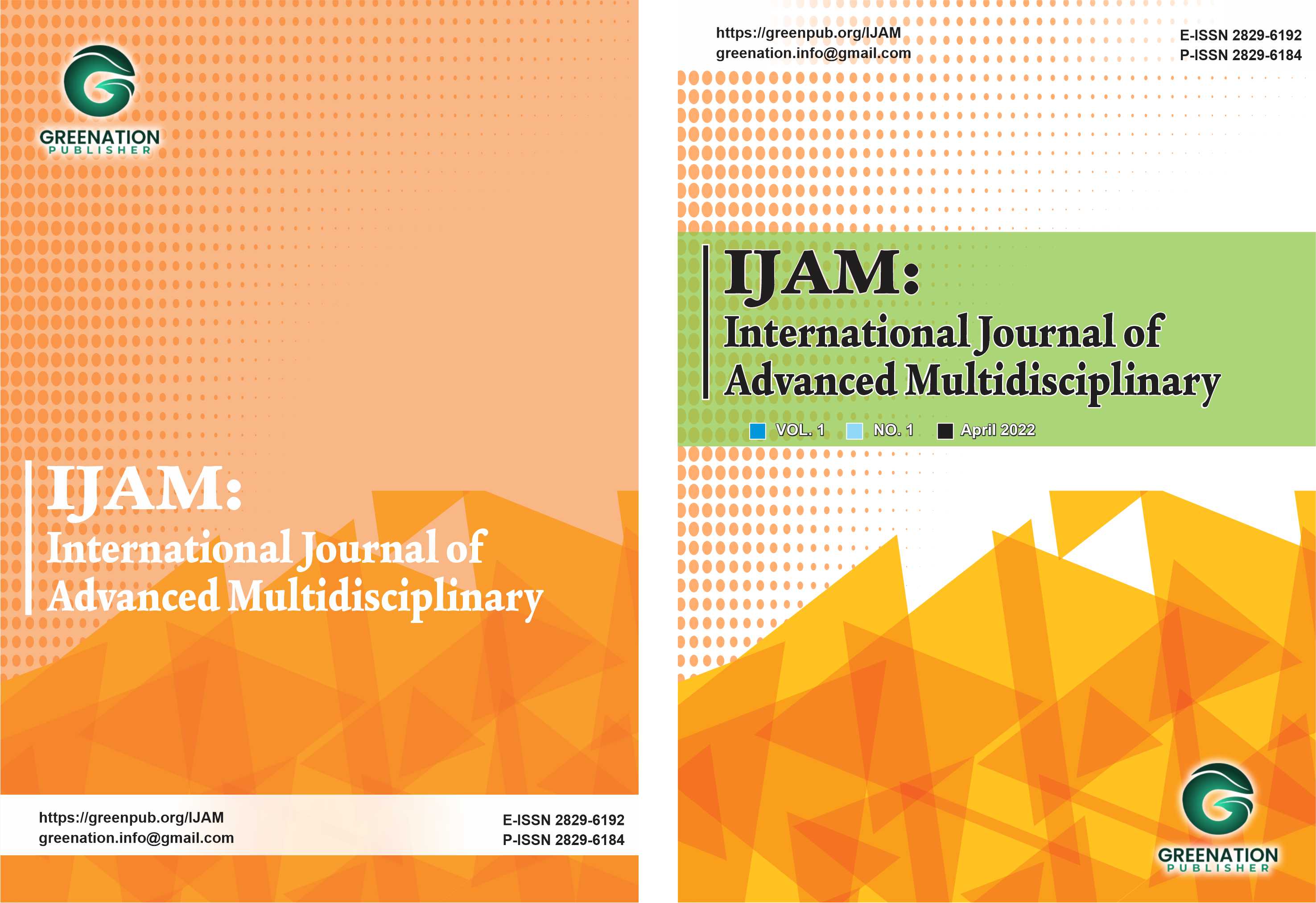The Influence of Transformational Leadership on Task Performance Through Organizational Commitment
DOI:
https://doi.org/10.38035/ijam.v2i4.446Keywords:
Transformational Leadership, Organizational Commitment, Task PerformanceAbstract
Performance is the value of a set of behaviors that contribute negatively or positively to the achievement of organizational goals. In the Higher Education unit, efforts to improve Lecturer Task Performance require a leader who has competence and quality and professionalism who can manage all operational activities in an effort to achieve organizational goals. Transformational leadership can be a leadership approach model at this time, meaning that leadership can turn the potential of the institution into energy to improve the quality of Higher Education institutions and their environment. In addition, the variable organizational commitment is also a factor that influences organizational performance. This study aims to determine the Influence of Transformational Leadership and organizational commitment on the Task performance of the Lecturers at the University Muhammadiyah Jakarta. The research used the quantitative approach with the survey. Technically analyzed data is the influence of exogenous variables on the endogenous variables, the path analysis was used. As for respondents, samples of 250 lecturers were taken. The result of the research indicated that: 1) Transformational Leadership had a positive direct influence on Task performance; 2) Organizational Commitment had a positive direct influence on Task performance; and 3) Transformational Leadership had a positive direct influence on Organizational commitment. Thus, improving task performance can be done with good Transformational Leadership and organizational commitment
References
Allen, N.J. and Meyer, J.P. 1990. The Measurement and Antecedents of Affective, Continuance And Normative Commitment To The Organization.Journal Occupational Psychology, Vol. 63: pp 1-18, 1– 18.https://doi.org/10.1111/j.2044-8325.1990.tb00506.x
Al Zeifiti, Salim Musabah Bakhit & Mohamad, Noor Azmi. 2017. The Influence of Organizational Commitment on Omani Public Employees’ Work Performance. International Review of Management and Marketing, Vol. 7, 151-160.
Bass, B.M., & Avolio B. J. (1994). Improving Organizational Influenceiveness Through Transformational Leadership. New York: Thousand Oaks SAGE Publication, Inc
Bernard M Bass, 1997, Does the Transactional-Transformational Leadership Paradigm Transcend Organizational and National Boundaries?,American Psychologist,Copyright 1997 by the American Psychological Association, Inc. 0003-066X/97,Vol. 52, No. 2. 130-139
Benkhoff, B. (1997), “Ignoring commitment is costly: New approaches establish the missing link between commitment and performance”, Human Relations, Vol. 50 No. 6, pp.701-726.
Borman, W. C., & Motowidlo, S. J. (1997). Task performance and contextual performance: The meaning for personnel selection research. Human Performance, 10(2), 99-109.
Campbell, J. P. (1990). Modeling the performance prediction problem in industrial and organizational psychology, In M.D. Dunnette& L.M. Hough (Eds), Handbook of Industrial and Organizational Psychology (pp. 687-732)., Palo Alto, CA: Consulting Psychologists Press
Cohen, A. (2007). Commitment before and after: An evaluation and reconceptualization of organizational commitment. Human resource management review, 17(3), 336-354
Colquit, Lepine, (2017). Organizational behavior, Wesson , ISBN 978-1-259-92766- 9, 6nd edition Mc Grow Hill International
Díaz-Vilela, L., Díaz-Cabrera, D., Isla-Díaz, R., Hernández-Fernaud, E., & RosalesSánchez, C. (2012) Spanish adaptation of the citizenship performance questionnaire by Coleman y Borman (2000) and an analysis of the empiric structure of the construct. Journal of Work and Organizational Psychology, 28: 135-149.
Fornell, C., & Larcker. D. F. (1981). Evaluating structural equation models with unobservable variables and measurement error. Journal of Marketing Research, 18(1), 39-50.
Hair Jr., J. F., Black, W. C., Babin, B. J. & Anderson, R. E. (2010). Multivariate Data Analysis: A Global Perspective. 7th Edition, Pearson Education, Upper Saddle River. 438p. New Jersey: Pearson Prentice Hall.
Hair, J. F., Hult, G. T. M., Ringle, C. M., and Sarstedt, M. (2017). A Primer on Partial Least Squares Structural Equation Modeling (PLS-SEM), 2^nd^ Ed., Sage: Thousand Oaks, Retrieved from: https://www.smartpls.com/documentation/literature/books
Hair, J. F., Ringle, C. M., & Sarstedt, M. (2011). PLS-SEM: Indeed a silver bullet. The Journal of Marketing Theory and Practice, 19(2), 139-15
H. M. Thamrin. 2012. The Influence of Transformational Leadership and Organizational Commitment on Job Satisfaction and Employee Performance. International Journal Innovation, Management and Technology, Vol. 3. No. 3.
Henseler, J., Ringle, C. M., & Sinkovics, R. R. (2009). The use of partial least squares path modeling in international marketing. In R. R. Sinkovics& P. N. Ghauri (Eds.), Advances in International Marketing (Vol. 20, pp. 277-320). Bingley: Emerald.
Hudori, H., Sari, E., & Matin, M. (2019). The Influence of Compensation, Organizational Climate, and Work Commitment on the Performance of the Employees. ICTES. https://doi.org/10.4108/eai.21-11-2018.2282236
Humphreys, J.H. (2002). Transformational leader behavior, proximity and successful services marketing. Journal of Services Marketing, 16(6), 487-502
Karnati, N., & Wiratma, D. A. (2017). Pengaruh Kepemimpinan Transformasional Dan Efikasi Diri Terhadap Kepuasaan Kerja Guru the Effect of Transformational Leadership and Self Efficacy of the Job Satisfaction Teacher. Jurnal Sosial Humaniora, 8, 85.
Jawahar, I., & Ferris, G. R. (2011). A longitudinal investigation of task and contextual performance influences on promotability judgements. Human Performance. 24, 251–269.
Keevy, Z. and Perumal, J. 2014. Promoting Transformational Leadership Practices of Retail Managers. Journal of Management Development. Vol 33 (10), 919-931.
Kovjanic, Snjezana., Schuh, Sebastian., & Jonas, Klaus. 2013. Transformational leadership and performance: An experimental investigation of the mediating Influences of basic needs satisfaction and work engagement. Journal of Occupational and Organizational Psychology. Volume 86, Issue 4: 543–555.
Lussier, R. N., & Achua, C. F. (2016). Leadership: Theory, application & skill development. Cengage Learning. Massoudi, A. H., Jameel, A. S., &
Marko Sarstedt, Christian M. Ringle, Joseph F. Hair,2021Partial Least Squares Structural Equation Modeling, © Springe, Handbook of Market Research, ISBN 978-3-319-57411-0 ISBN 978-3-319-57413-4 (eBook) ISBN 978-3-319-57412-7 Pages 587-632
Mohammed, Fatima & Eleswd, Muath. 2013. Job Satisfaction and Organizational Commitment: A Correlational Study in Bahrain. International Journal of Business, Humanities and Technology, Vol. 3, no. 5, 43-53.
Motowidlo, S. J., Borman, W. C., & Schmidt, M. J. (1997). A theory of individual differences in task and contextual performance. Human Performance, 10(2), 71-83.
Peter g., & Northouse. (2016). Leadership: Theory and practice: Vol. Seventh `Ed.158
https://doi.org/10.1016/s0099-1333(98)90189-6
Rashid, M. Z. A., Sambasivan, M. and Johari, J. (2003), “The influence of corporate culture and organizational commitment on performance”, Journal of Management Development, Vol. 22 No. 8, pp. 708-728.
Robbins, S. P. 2008.Organizational Behavior. New Jersey Prentice Hall.
Rotundo, M., & Sackett, P.R. (2002). The relative importance of task, citizenship, and counterproductive performance to global ratings of performance: A policy-capturing approach. Journal of Applied Psychology, 87(1), 66-80.
Wang, C. (2010). An empirical study of the performance of university teachers based on organizational commitment, job stress, mental health, and achievement motivation. Canadian Social Science, 6(4), 127-140.doi.org/10.3968%2Fj.css.192366 9720100604.013
Wynne W. Chin, 2001, PLS-Graph User’s Guide, Version 3.0, ©1993–2001. Soft Modeling Inc. A
Downloads
Published
How to Cite
Issue
Section
License
Copyright (c) 2024 Lily Yuntina, Eliana Sari, Neti Karnati

This work is licensed under a Creative Commons Attribution 4.0 International License.
Authors who publish their manuscripts in this journal agree to the following conditions:
- The copyright on each article belongs to the author(s).
- The author acknowledges that the International Journal of Advanced Multidisciplinary (IJAM) has the right to be the first to publish with a Creative Commons Attribution 4.0 International license (Attribution 4.0 International (CC BY 4.0).
- Authors can submit articles separately, arrange for the non-exclusive distribution of manuscripts that have been published in this journal into other versions (e.g., sent to the author's institutional repository, publication into books, etc.), by acknowledging that the manuscript has been published for the first time in the International Journal of Advanced Multidisciplinary (IJAM).























